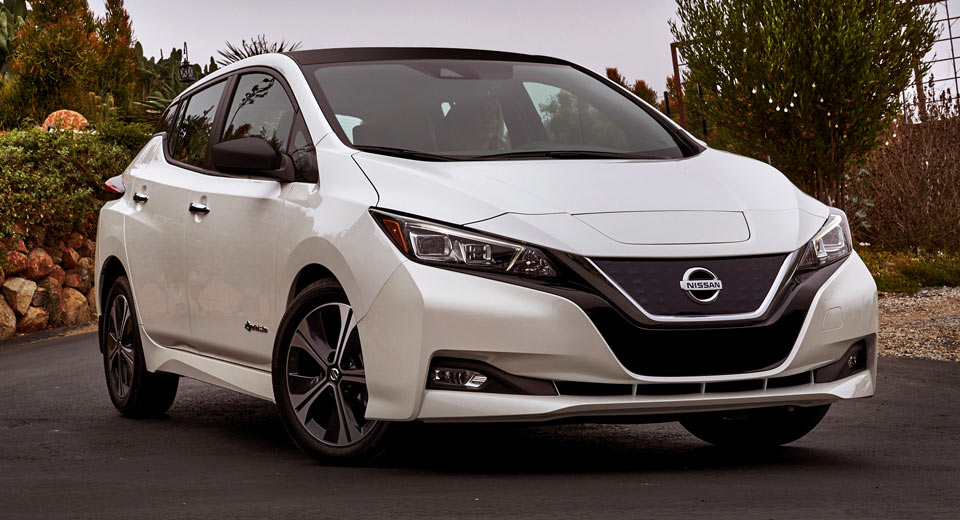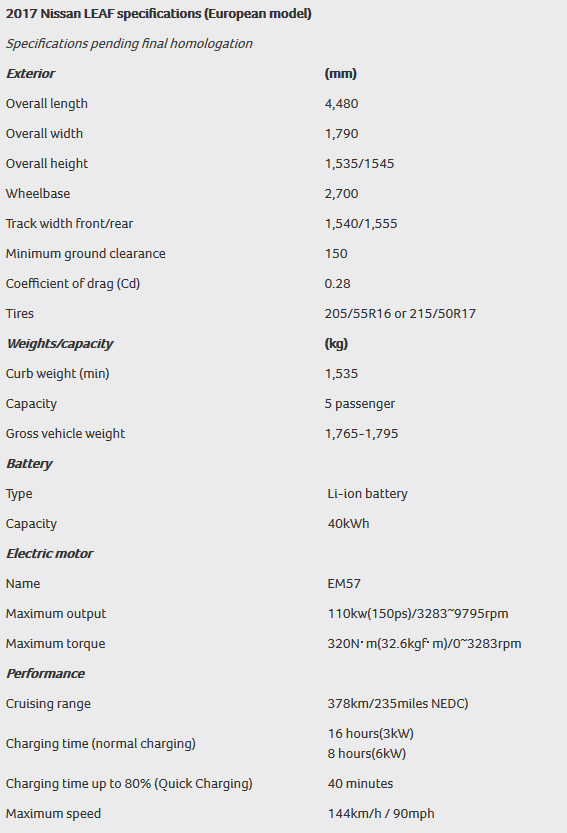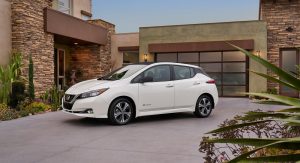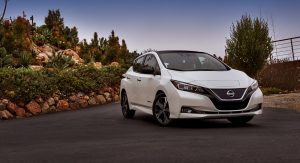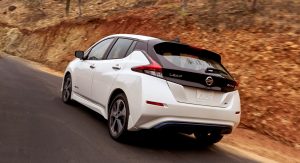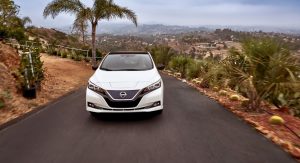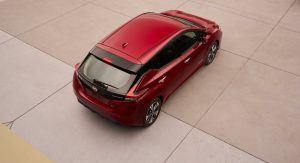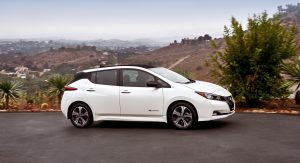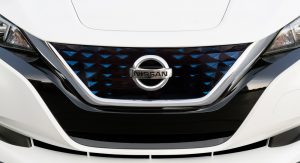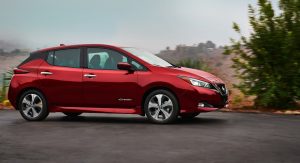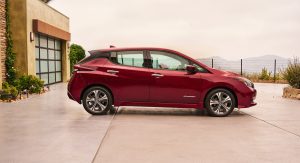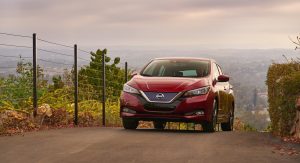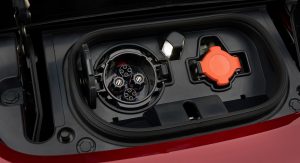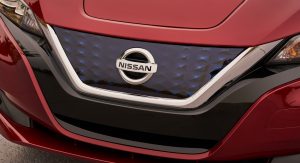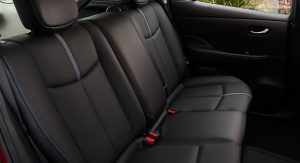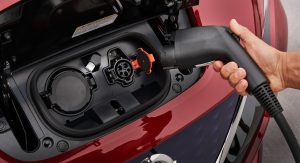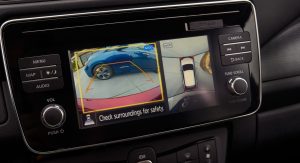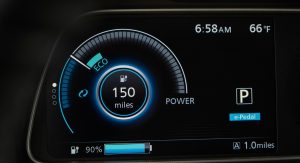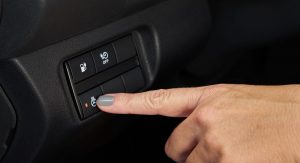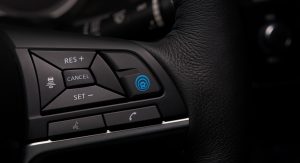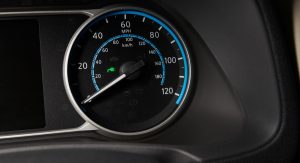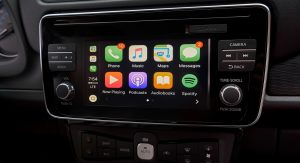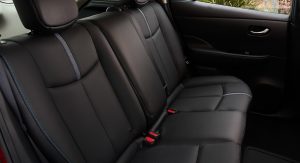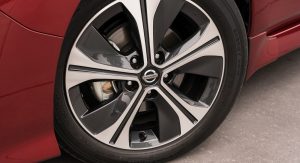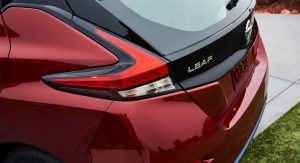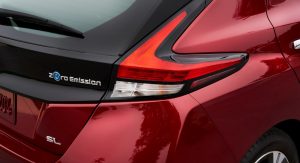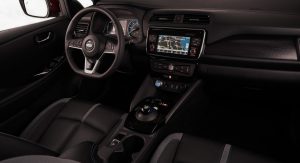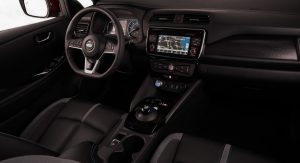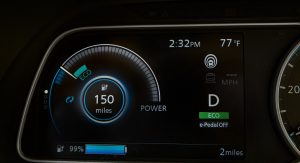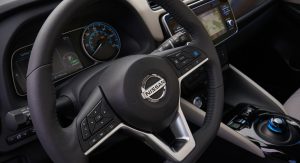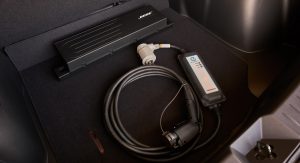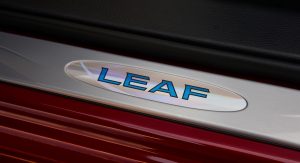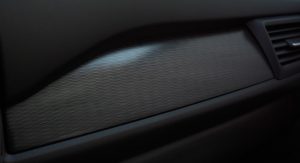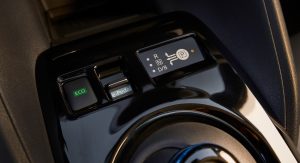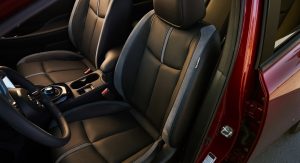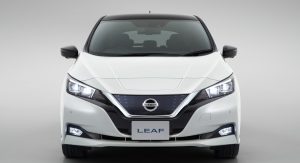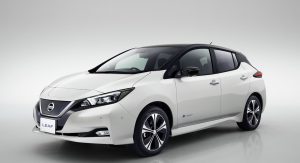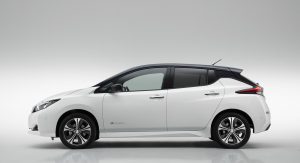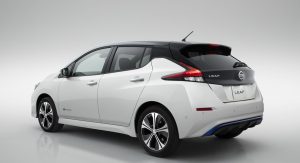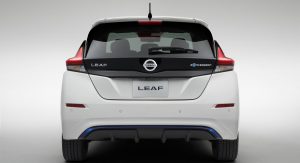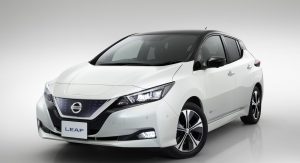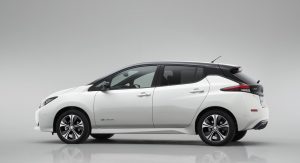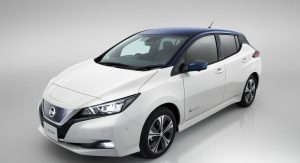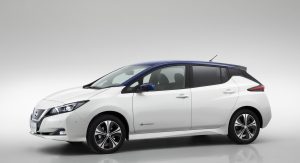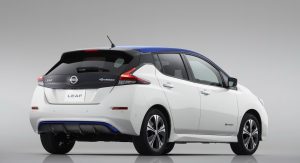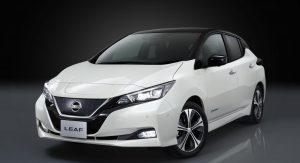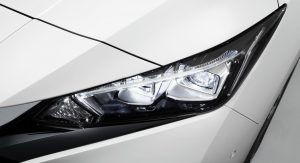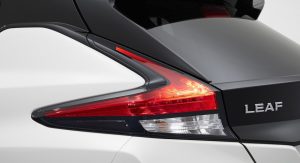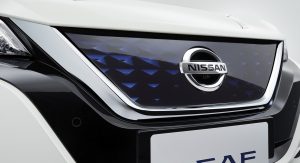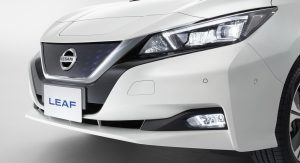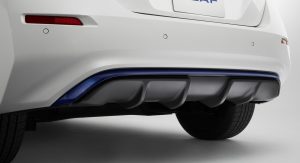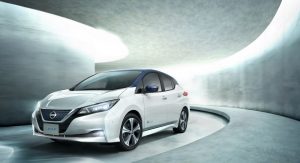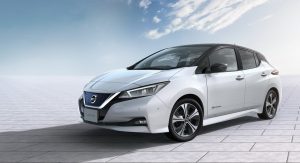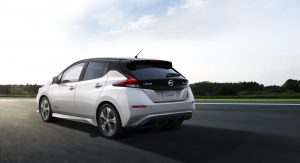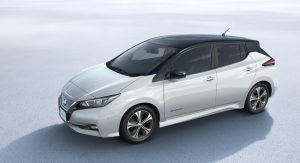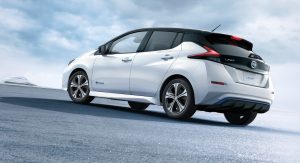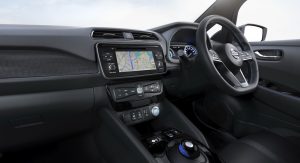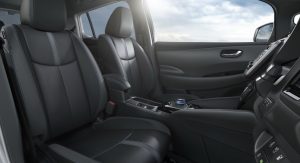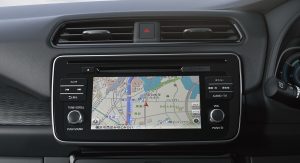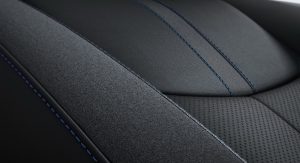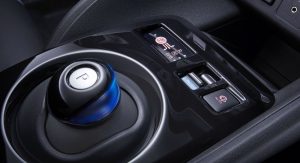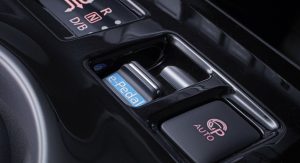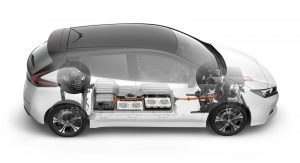Well, after months of eager anticipation, the 2018 Nissan Leaf has arrived, complete with an all-new design and powertrain that promise to take it to unexplored heights.
Set to premiere at the Frankfurt Motor Show, the all-new Leaf will go on sale in early October in Japan before arriving in the U.S., Canada and Europe in early 2018. U.S. prices start at $29,990 before incentives.
Powering the EV is a 40-kWh lithium-ion battery pack mated to an electric motor delivering 147 hp and 236 lb-ft of torque. In the U.S., Nissan says the EPA-estimated range sits at 150 miles while under the more generous European testing regime, it has a publicized cruising range of 235 miles (378 km). In both markets, it takes 16 hours to charge the battery via a 3kW plug, 8 hours from a 6kW plug and supports a quick charging function that tops up a depleted battery to 80 per cent in 40 minutes.
As outlined throughout the lead up to the launch, the new Leaf adopts a number of advanced technologies which the outgoing model didn’t have.
Perhaps the most important of them all is ProPILOT, the Japanese automaker’s single-lane autonomous driving technology. The system can automatically control the distance to the vehicle in front at speeds between 19 mph (30 km/h) and 62 mph (100 km/h) and can also steer the vehicle and ensure it remains centered in its lane. If needed, the system can bring the Leaf to a complete stop and a simple touch of the accelerator will reactivate ProPILOT.
Also found within the ProPILOT suite is an autonomous parking function that uses 12 ultrasonic sensors around the car to guide the Leaf into a parking space.
Another intriguing addition to the 2018 Leaf is the e-Pedal. Offered as standard equipment, it allows the driver to accelerate, decelerate, stop and hold the car all through the accelerator pedal. Nissan claims that the single-pedal setup can be used for more than 90 per cent of an average driver’s needs.
Further technology features in the latest-gen Leaf include Intelligent Lane Intervention, Lane Departure Warning, Intelligent Emergency Braking, Blind Spot Warning, Traffic Sign Recognition, Rear Cross Traffic Alert and Intelligent Around View Monitor.
Both the exterior and interior designs are dramatically different from the old model introduced in 2010. The overall shape of the EV is far less quirky, there’s a host of more refined lines and an all-together more mature design. Among the standout features are the new headlights and taillights, faux front grille and thick C-pillars.



